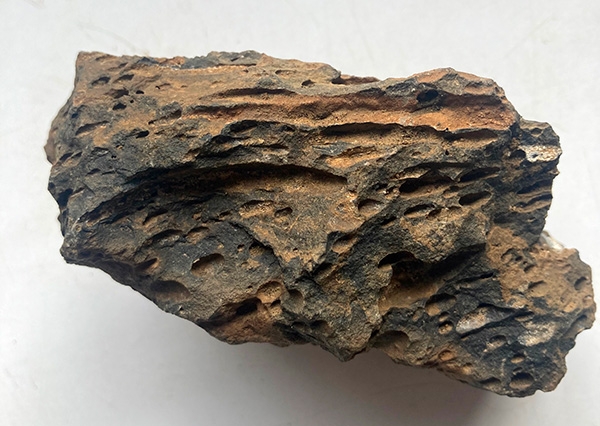Claire Annie Nelson '15 is turning the most infamous greenhouse gas into harmless rock.
Wait, you’re probably thinking. What?
It’s true.
At Cella, she’s storing carbon dioxide (CO2) from the atmosphere away inside volcanic rocks.
“I was inspired to start this company because the climate emergency is far too urgent to perfect the science behind these solutions – we need to take action now,” explained Nelson, who majored in geology and minored in environmental engineering at Union. “We urgently need to develop and commercialize carbon capture and storage technology, both to circumvent current emissions from reaching the atmosphere (from things like power plants), and to remove ‘legacy carbon’ that’s been emitted over the last couple hundred years.”
Cella, which comes from a Latin word meaning, “a safe chamber underground used for storage,” is living up to both its name and mission.
The company is harnessing the geologic carbon cycle, which naturally converts CO2 from a gas into a solid.
Rocks have their own brand of photosynthesis – similar to plants taking in CO2 and using it to build leaves and stems, Nelson explained. “Volcanic rocks, specifically, chemically react with CO2 and essentially ‘breathe it in,’ transforming it into a solid form that becomes part of the rocks themselves.”
“We’re speeding up a natural chemical reaction by injecting CO2 from the air into volcanic rocks underground,” Nelson added.
Why?
Because taking CO2 out of the air goes a long way toward addressing climate change, but only if it stays out of the air. Only if you can safely put it somewhere else.
“As a carbon storage company, we partner with companies that use technology like direct air-capture machines,” Nelson said. “These are basically giant fans with little filters on them that suck CO2 out of the air.”
And Cella can store this CO2 pretty much “anywhere there is basalt,” Nelson added. “This common volcanic rock makes up about 70 percent of the Earth’s surface.”
It’s all over Hawaii and Iceland and prevalent in the Pacific Northwest (Oregon and Washington), for instance, as well as India’s Deccan Trapps and Kenya’s East African Rift.
And Kenya is where Cella, launched in December 2022, recently began its pilot operation.
“There are tons and tons of basaltic rock in the East African Rift, and because it’s a volcanic region, there’s lots of available geothermal energy,” Nelson said. “And we need renewable energy to power this process in order to get the most climate benefits.”
Still, challenges do exist to storing CO2 in basalt.
“To be honest, this is a very new technology and we need to do a lot of research and development,” Nelson explained. “The really big question mark is how do we get this to the scale we need?”
The United Nations’ Intergovernmental Panel on Climate Change reports make it clear that the planet needs a carbon removal industry twice the size of the oil and gas industry by 2050 in order to meet climate goals.
“It’s been proven to work in small experiments and can really rapidly turn CO2 from air into a rock underground. And luckily, there is plenty of volcanic rock out there so capacity isn’t a factor. It’s just, how quickly can we do it?”
One other hurdle is cost.
The innovative technology Cella is working on can make this process very cost competitive – $10 per ton of CO2, Nelson said. Recent historic legislation from the Biden administration enacted a tax credit that offers $180 per ton of CO2 removed by this method, but the rest of the world has yet to follow suit putting a price on carbon.
“What’s expensive is getting CO2 out of the air,” she added. “You have to suck a lot of air through those machines, which takes a lot of energy, as CO2 is only .04 percent of air.”
Nonetheless, Nelson is excited about Cella’s future and the difference it can make. The company recently won a pre-purchase agreement with Frontier Climate Fund.
“Frontier is a fund that is an advanced market commitment (AMC) for carbon removal,” Nelson said. “AMCs basically buy things before they exist (pre-purchase) in order to catalyze growth in a new industry.”
“Frontier is widely known as the most prestigious ‘stamp of approval’ for new carbon removal technology, because the application process is extremely competitive and involves rigorous technological review by experts in the field,” she continued.
Cella received a $1.5 million commitment in revenue through its purchase agreement with Frontier. Cella sold the first engineered carbon removal credits from the continent of Africa.
“Our goal is to become a global carbon storage provider by deploying our technology wherever possible,” Nelson said. “We hope to partner with both carbon dioxide removal companies to generate and sell carbon removal credits, as well as partner with industrial CO2 emitters to help countries achieve net zero.”
If not for Union, these plans for the future might be very different.
“I would absolutely not be where I am today without Union’s Geology Department,” she said. “I was never a ‘science kid’ and was intimidated by hard science, but my professors encouraged me to push beyond my comfort zone, which gave me the confidence to take the leaps that I have since.”


